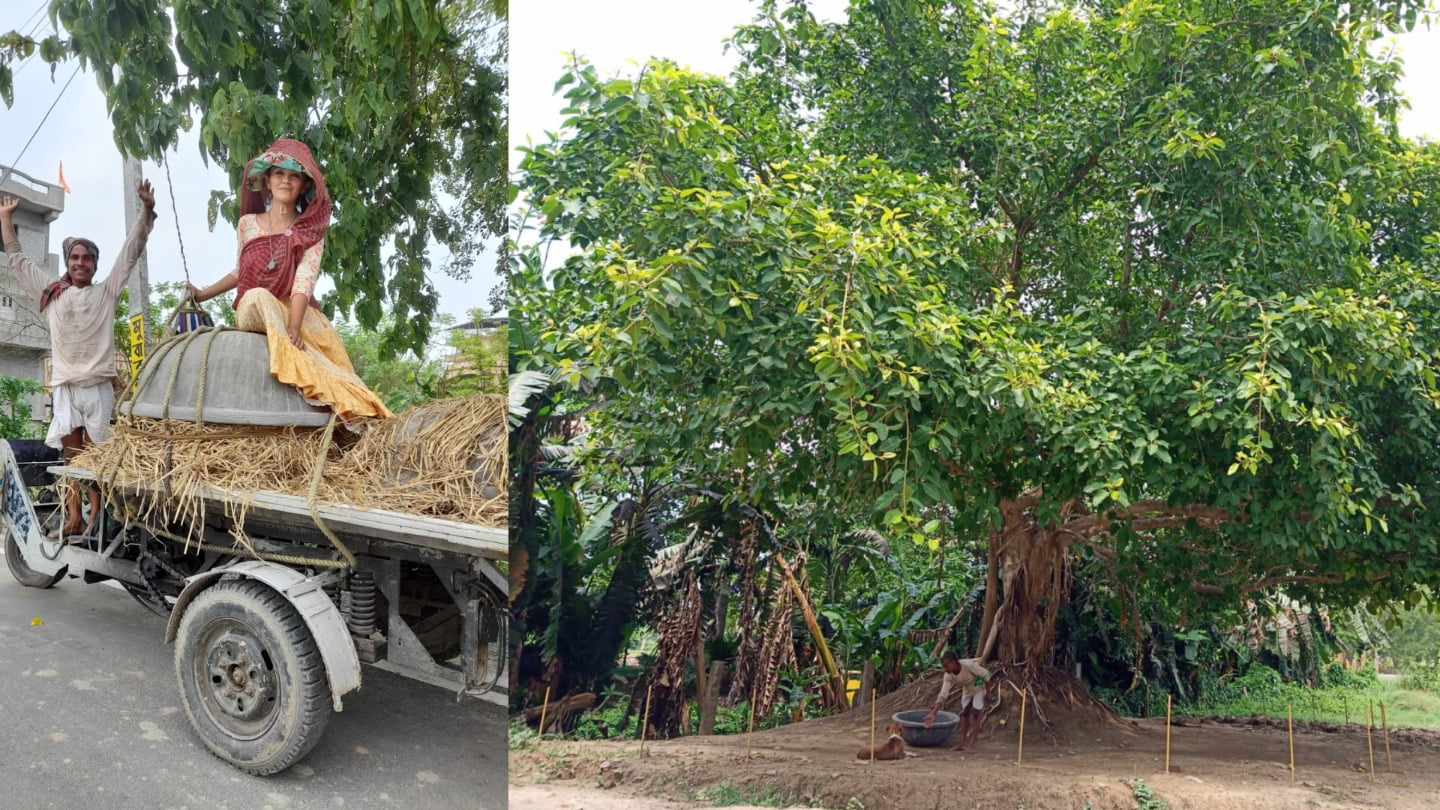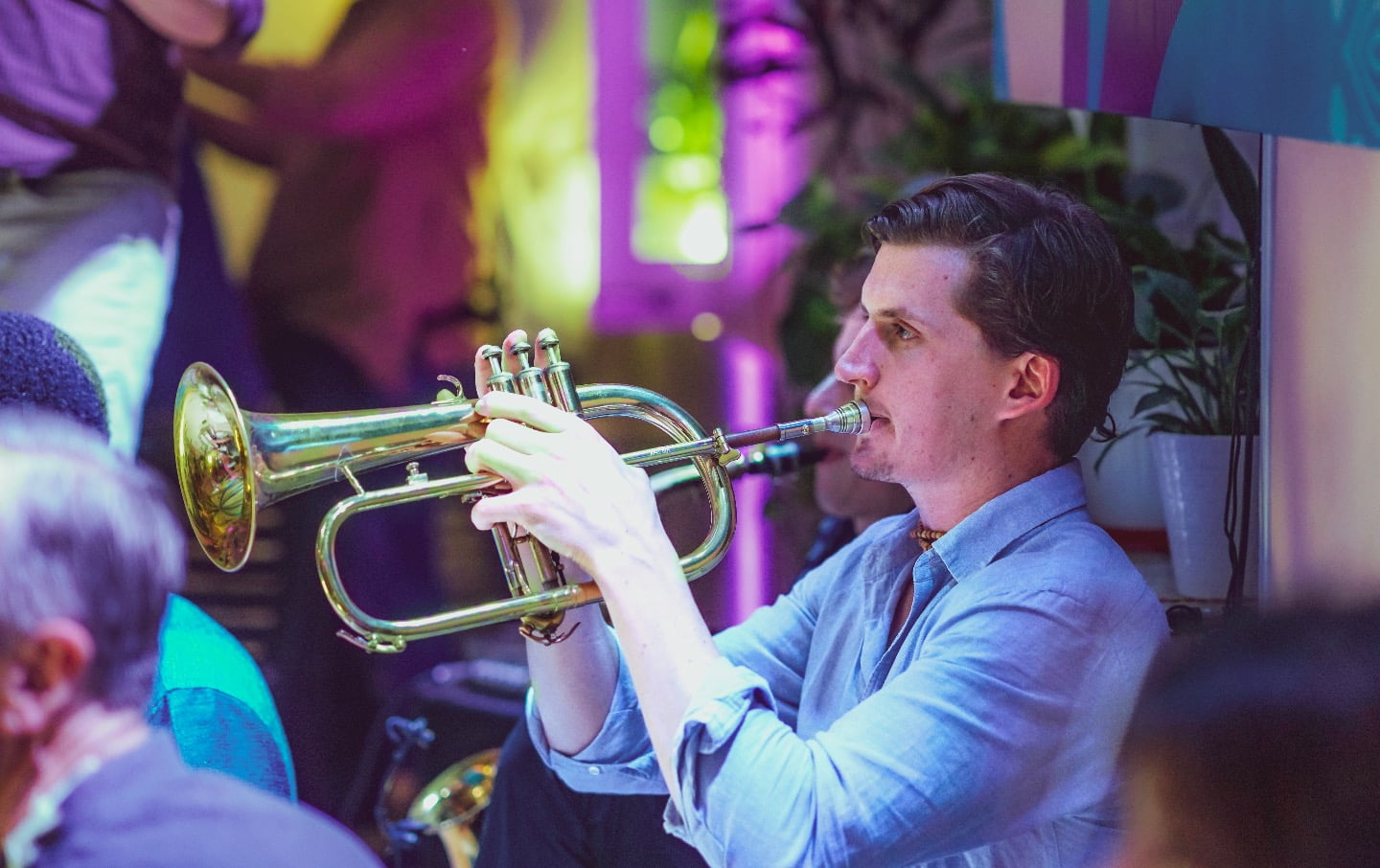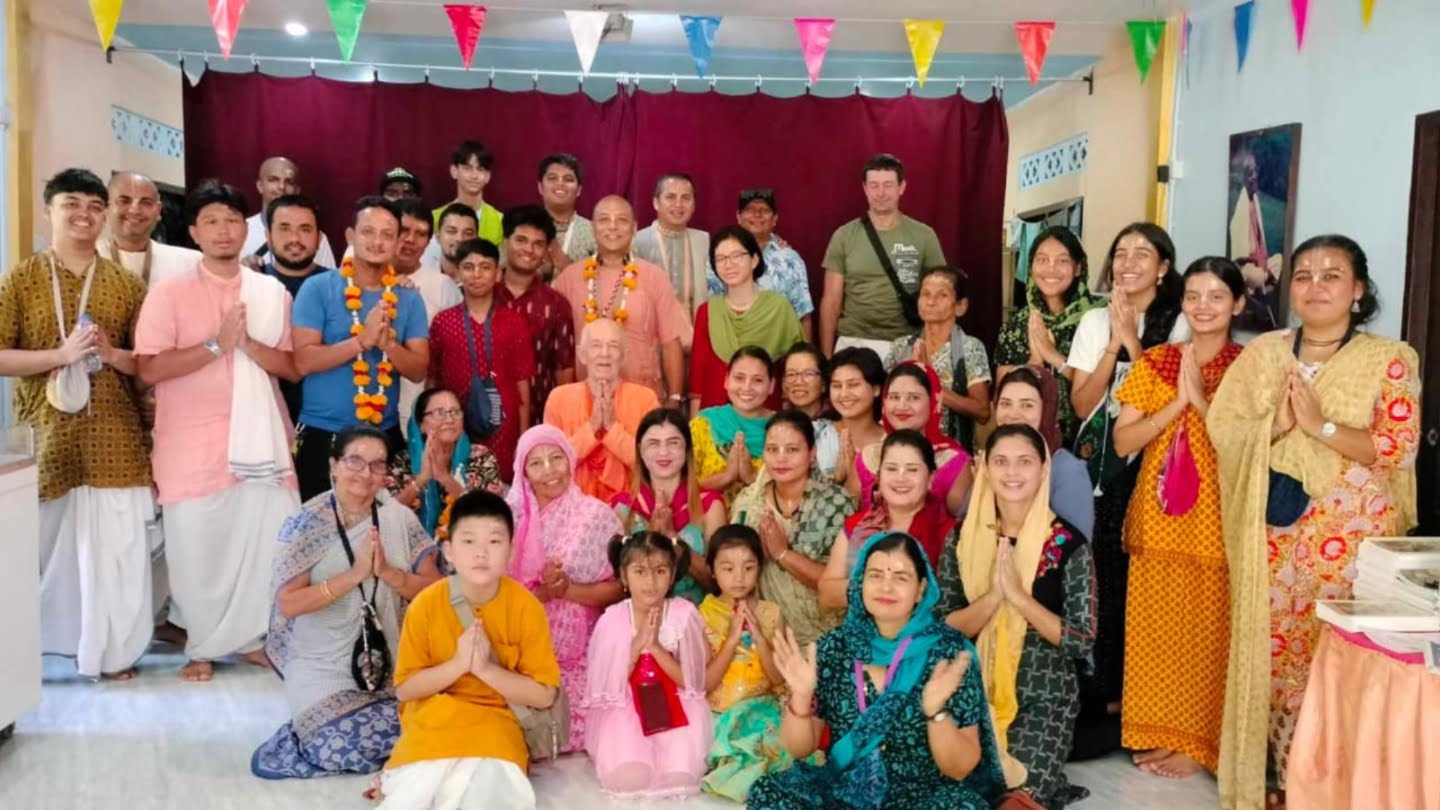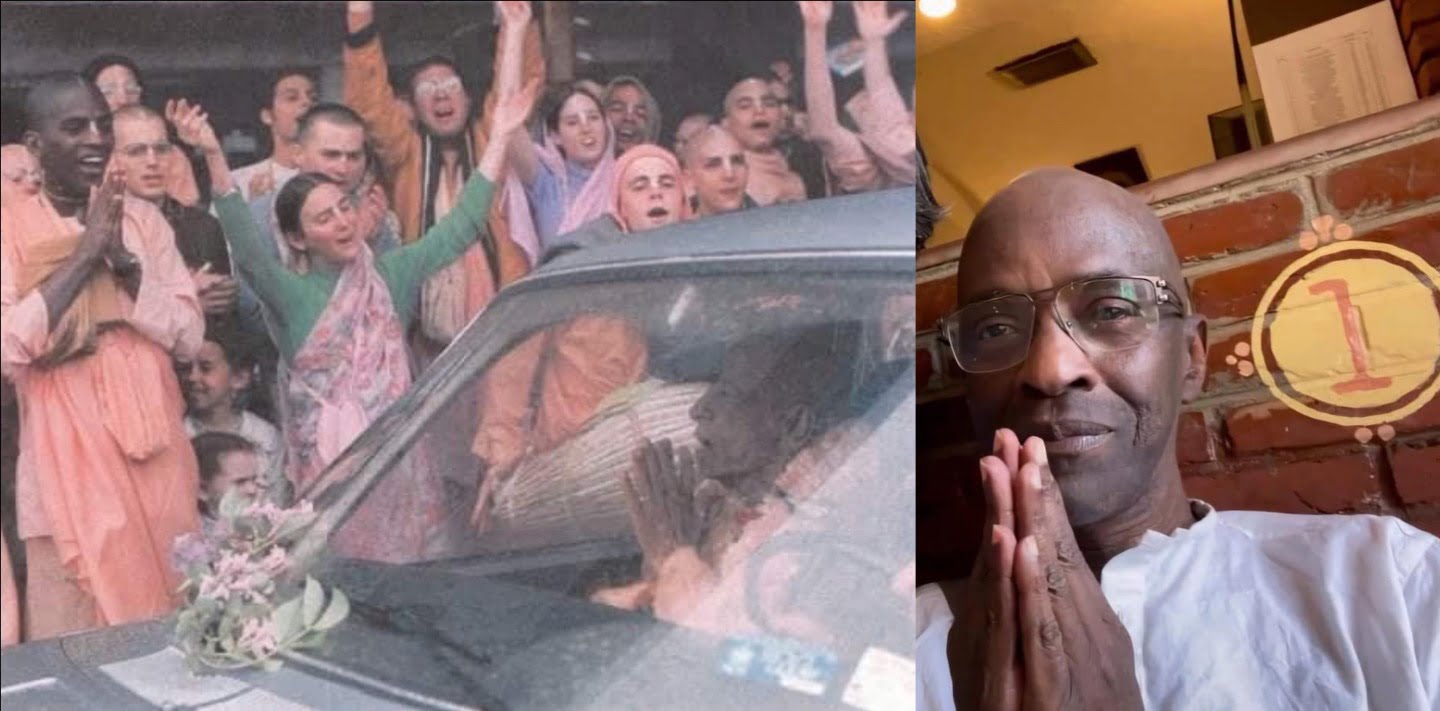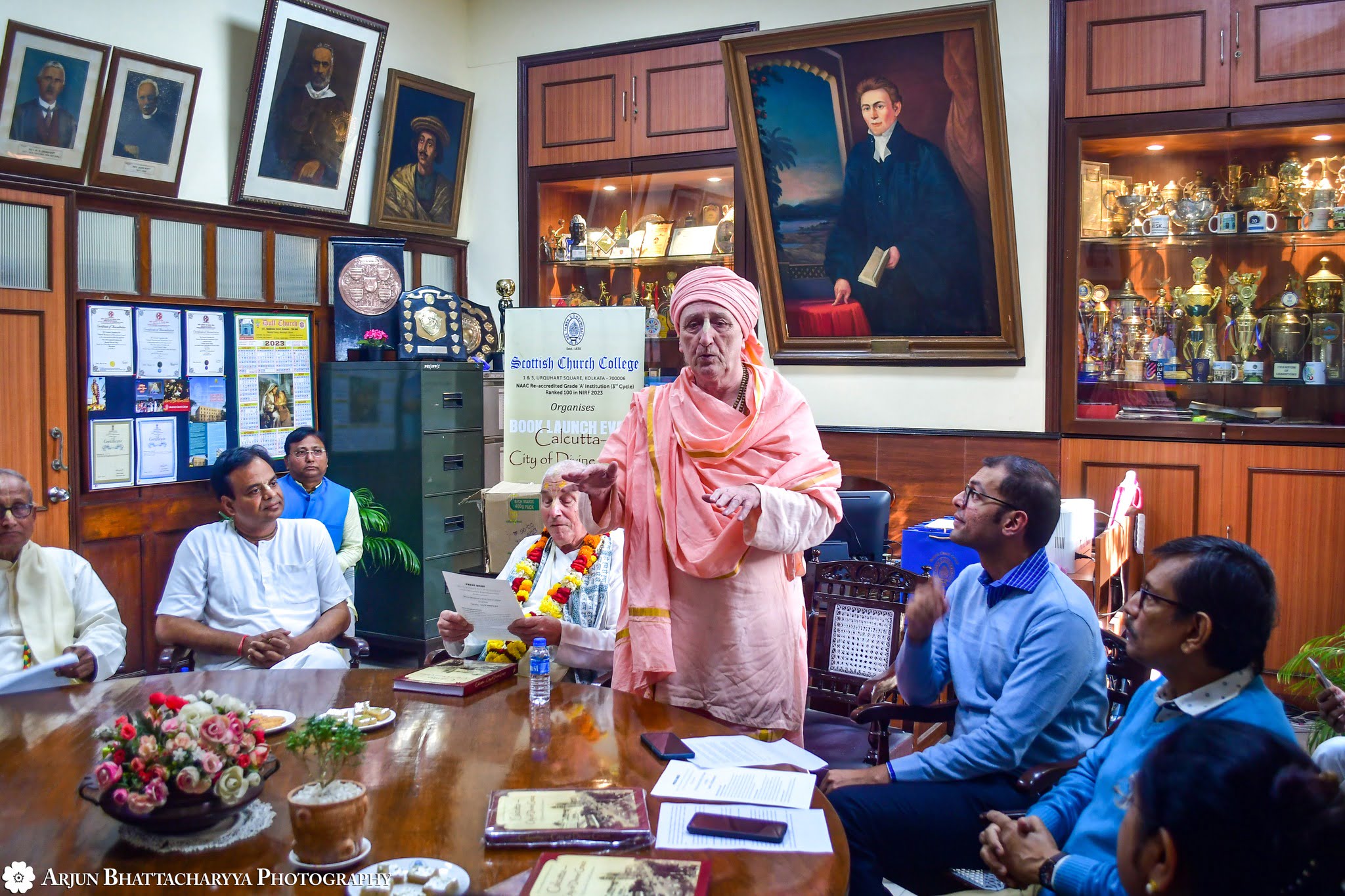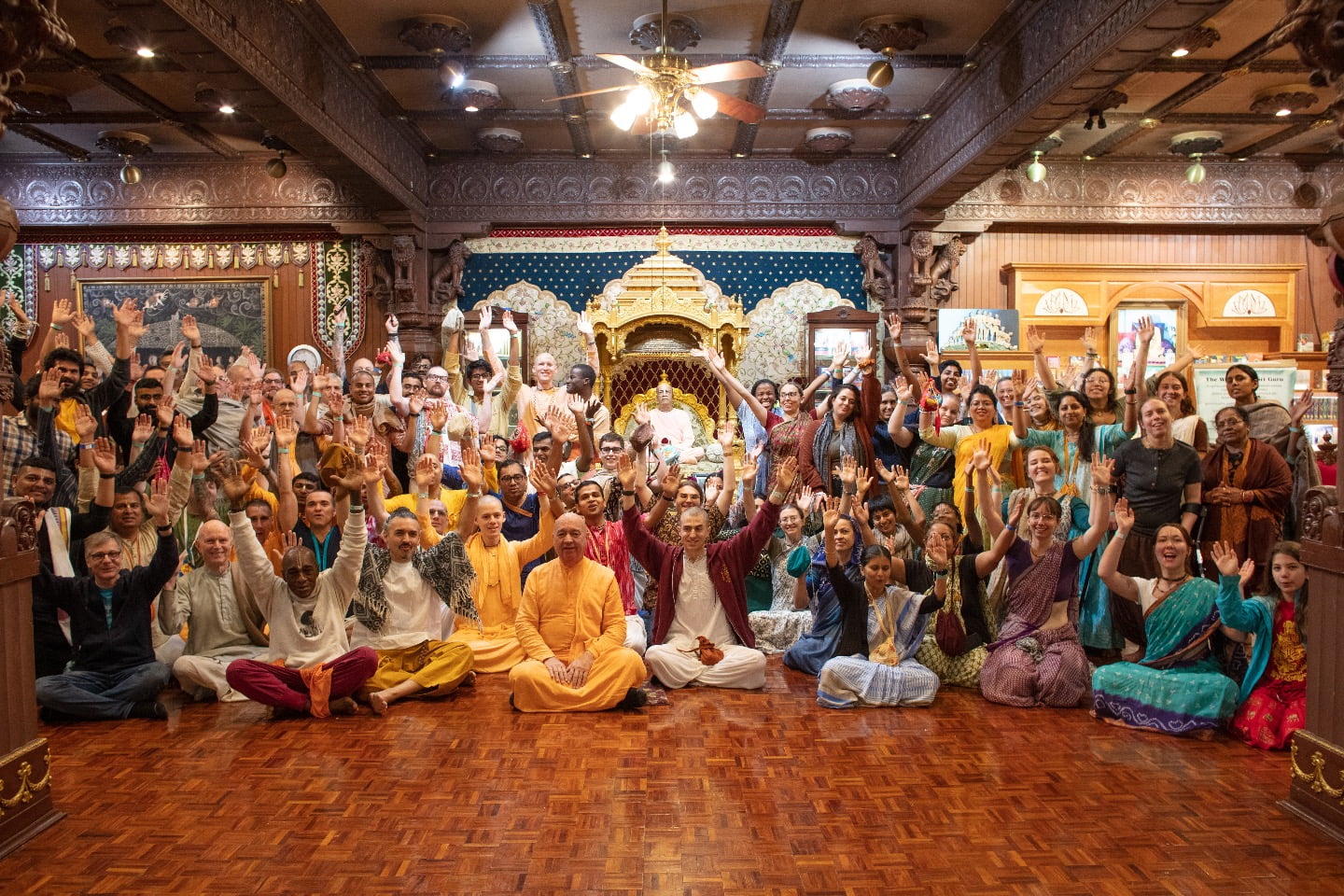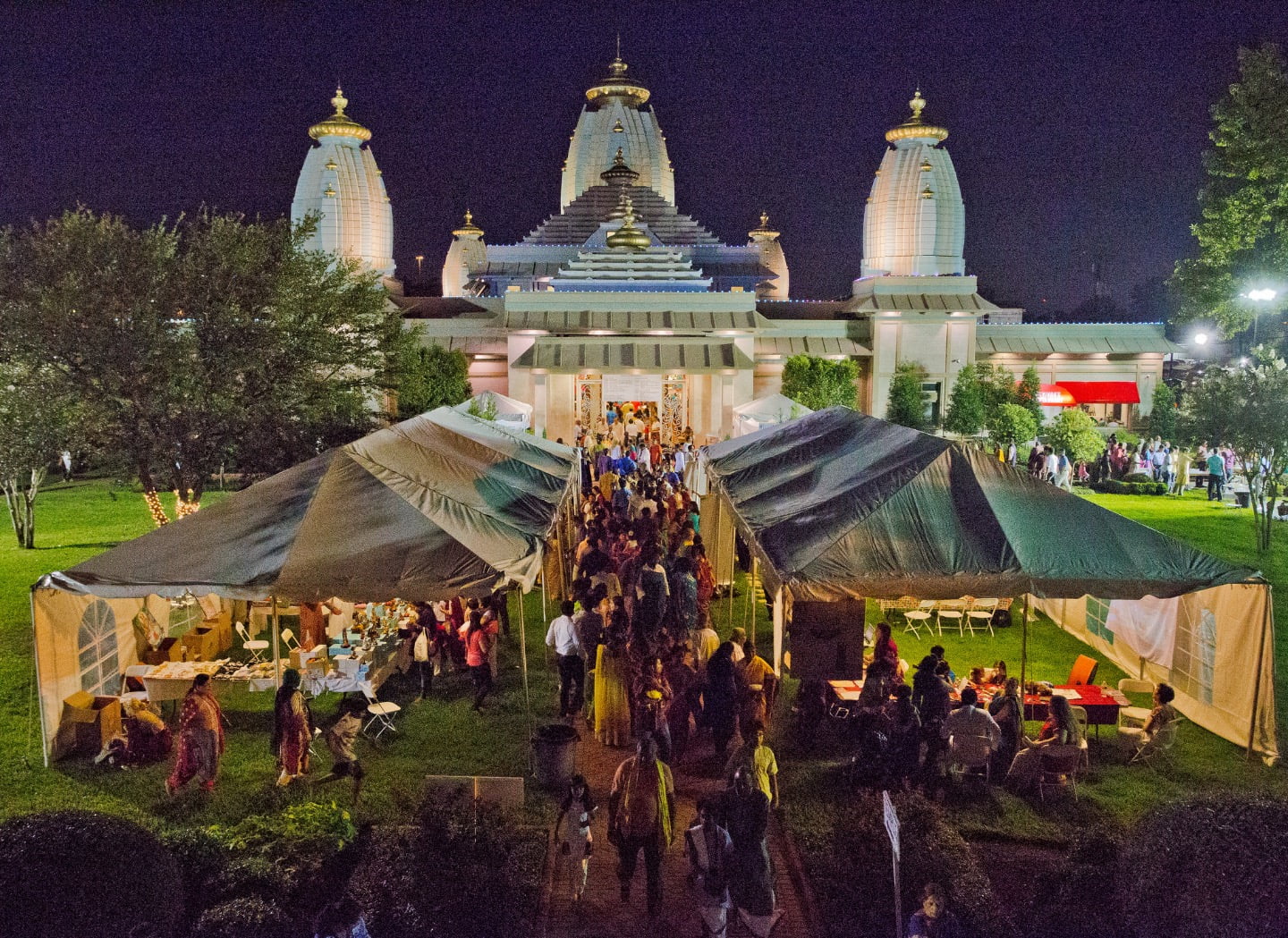ISKCON Penang – “A Temple Like This”
By Madhava Smullen | Oct 18, 2008
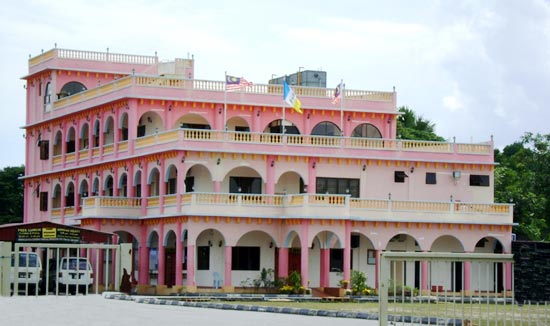
In 1971, when ISKCON founder Srila Prabhupada made his only visit to Malaysia, he showed the wife of the then chief Indian minister a sketch of a typical Indian Mandir and requested her to to help him build a “temple like this.” Now in the Malaysian state of Penang – known as the “Pearl of the Orient” during British times – Srila Prabhupada’s vision is gradually unfolding.
Travelling ISKCON teacher Janananda Goswami says, “We have twenty-five centers in the country, several of which worship installed Deities. Seven hundred devotees have been initiated into Krishna consciousness, and thousands of others are practicing. This year alone there will be thirty Rathayatra parades throughout the country. But there has never been a custom-built temple – until now.”
The dream morphed into reality in 2002 when Penang local Kalesa Dasa, a corporation development worker, noticed a vacant parcel of land which had previously been allocated for religious purposes. When he found that it was still available, he convinced the local government that ISKCON was a worthy cause, and the land was signed over.
But there were still no devotees, no temple and no money. Slowly devotees came forward to support the project, funds trickled in, and a three-phase construction plan was approved by the local council.
Completed in 2004, phase one comprised of a hall, kitchen, offices, seminar rooms, bathrooms and accommodation for guests and devotees. That year, the building hosted the Maylasian Hare Krishna community’s annual convention, catering for 700 devotees. The Sunday program grew rapidly until it was drawing 200 devotees every week. Although there were no deities – yet – each festival drew large crowds.
In 2006 the temple design was modified, the committee streamlined, and a clear fund raising plan put into operation. Inspired, devotees decided to install deities of Sri Sri Gaura Nitai despite the lack of a custom-built temple. In early 2008, the gorgeous 42” marble deities arrived from Jaipura, followed by a life size “murti” of Srila Prabhupada from Ujjain.
Thursday September 18th was set as the date for the deities to be ceremoniously installed in their new home. Excited, devotees hurried to prepare for their arrival. Some trained at the Deity worship course in Mayapura, India. Others were primed in the standards of cooking and cleanliness. A new seat for Prabhupada, an altar, and a deity kitchen were constructed, while the deity room was modified. Deity outfits, jewelery, wigs, and many other items were made and purchased.
As the installation date approached, devotees became worried. Prospective guests of honor Prabhavisnu Swami, Bhakti Vighnasa Nrsingha Maharaja and Bhanu Swami couldn’t come due to prior commitments at a Ukraine festival. Malaysian Swami Bhakti-vrajendranandana couldn’t attend for health reasons. And India-based Jayapataka Swami cancelled at the last minute to attend a Bangalore court case on behalf of ISKCON.
Although this was a disappointment, reservations about the event’s success turned out to be unfounded. 400 devotees arrived on Wednesday September 17, the day before the installation. Preliminary bathing, opening of the deities’ eyes and other rituals were performed. Traditional kirtan singing continued throughout the night until the 4:30 service the next morning. At least 30 devotees chanted at any one time, paying tribute to World Holy Name week which ran alongside the installation celebration.
Devotees appeared in their hundreds for the 4:30 service on the morning of the installation. The deities of Gaura Nitai were revealed, and amidst much festivity they were carried to the Abhisekha kund, or bathing pool. A fire sacrifice began, scriptures were read aloud, and the kirtan resounded as the bathing began. The crowds swelled as the sun rose. “We could all feel that this was a great step towards fulfilling Prabhupada’s will,” says Janananda Goswami, who attended.
Once they had been cleaned and dried, the deities were carried to their altar. Crowds swarmed to the temple room, packed shoulder to shoulder so tightly that some couldn’t enter. The curtains fell and the deities were hidden from view so that they could be dressed for the first time. Devotees stepped forward to place gifts at the foot of the altar. Next, sankalpa – specific vows in the service of the Deity – and prana pratishta – requesting the Lord to enter into the Deities – began.
Although Jayapataka Swami, who had been schedule to perform this ritual, was absent, modern technology came to the rescue. The Swami was able to watch the event on live webcam, and as Janananda Gosvami touched the deities’ hearts with sacred Darbha grass and chanted mantras, Jayapataka Swami touched the hearts of the Deities on his computer screen and meditated on invoking the Lord’s presence.
As the installation rituals came to a close, the Deities’ names were revealed as Sri Sri Nitai Gauranga-rai. They were then offered an incredible 508 dishes, including rice, pickles, chutneys, breads, vegable dishes, cakes, soups, dahls, pastries, sweets, fruits, and drinks. Finally, as the crowds grew and the anticipation rose, the sound of conchshells rent the air and the curtains opened once more. Sri Sri Nitai Gauranga-rai had revealed themselves to all, and the devotees danced and sang at the tops of their voices.
After 800 devotees had been served a delicious feast, the festival continued late into the night with more kirtans, discussions and more meditative singing known as bhajans.
The next morning also saw a full temple hall, for the first ever mangal arati – 4:30am service – for Their Lordships Sri Sri Nitai Gauranga-rai. Throughout the day, people came to see the beautiful deities. “We hope this most auspicious event will please Srila Prabhupada and speed up his will to build a “Temple Like this,” says Janananda Goswami.
He adds that the ground-breaking ceremony for a grand new temple will be held in December this year, with construction following immediately after. “Plans have already been fully approved by the local authorities, and traditional sthapati builders and vastu architects have been consulted,” he says.
The new temple will be shaped like an octagon, with 3 domes housing deities of Radha-Krishna, Gaura Nitai and another unconfirmed deity. Completion is expected by 2012, with a multi- purpose cultural hall for dramas, weddings and public events to follow.





